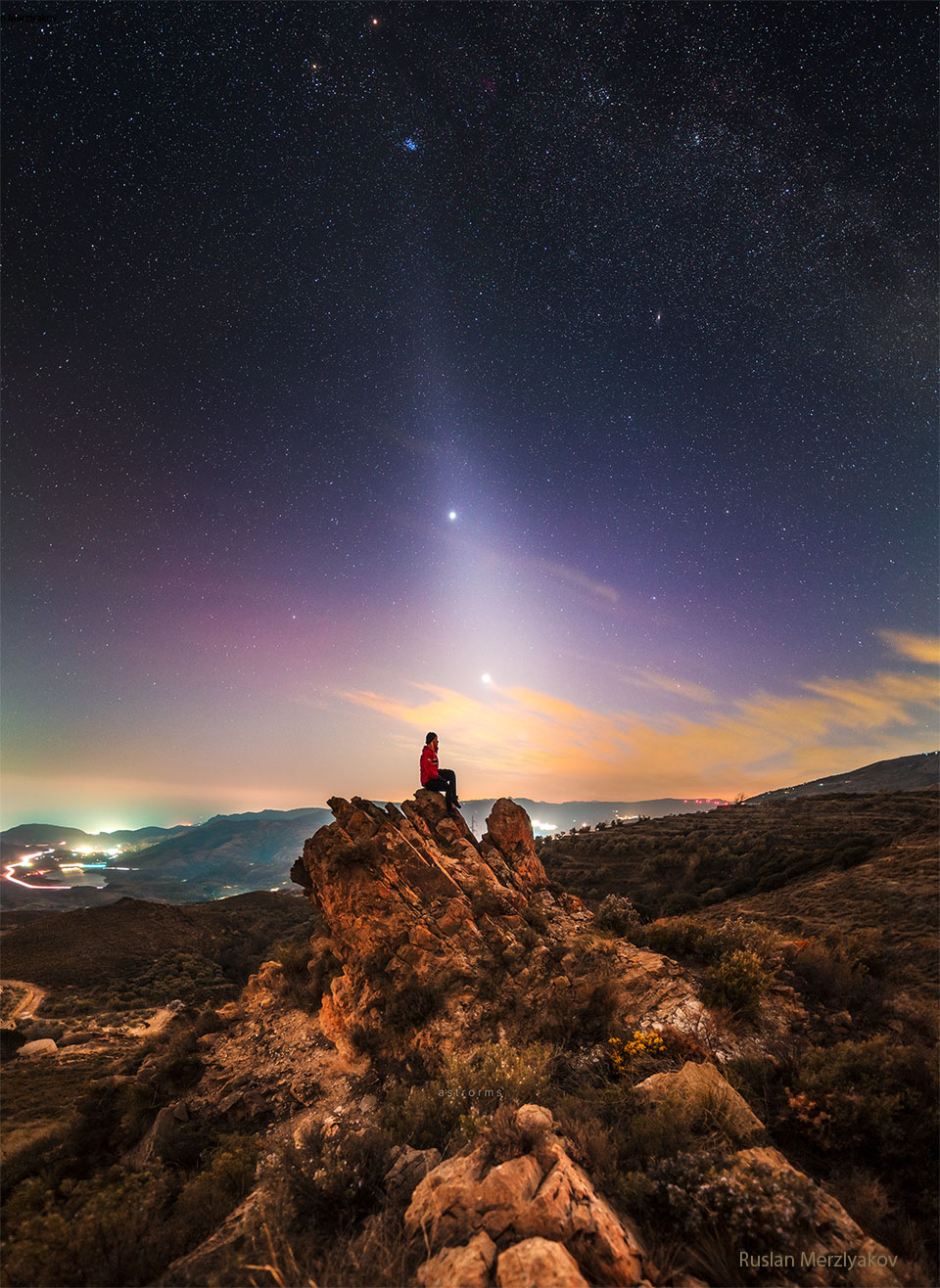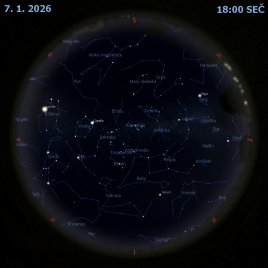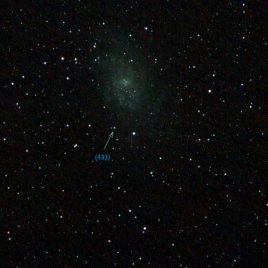Zvířetníkové světlo s Venuší a Jupiterem

Uznání a copyright: Ruslan Merzlyakov (astrorms)
Co způsobuje ten neobvyklý paprsek světla vycházející z obzoru? Prach obíhající kolem Slunce. V určitých obdobích roku se po západu nebo před východem Slunce objevuje výrazný pás prachu z vnitřní Sluneční soustavy, který je osvětlovaný Sluncem a nazývá se zvířetníkové světlo. Prach byl vyvržen převážně ze slabých komet Jupiterovy rodiny a pomalu se spirálovitě blíží ke Slunci. Na kompozitním snímku z poloviny února z Národního parku Sierra Nevada ve Španělsku je zářící pás zvířetníkového světla přímo před jasnými večerními planetami Jupiterem (nahoře) a Venuší (dole). Daleko za zvířetníkovým světlem září temná noční obloha včetně hvězdokupy Plejády. Jupiter a Venuše si na večerní obloze pomalu vyměňují místa a za pár dní dojde k jejich těsnému úhlovému přiblížení.
Seznam odkazů v popisu
- APOD: 2001-08-13 Kousek meziplanetárního prachu
- Shopify.com: Foto: Kočka v kosmických brýlích :-)
- NASA: Solar System Exploration
- Wikipedia: Zodiacal_light
- SWIN.edu.au: COSMOS - The SAO Encyclopedia of Astronomy
- NASA: Sun - Our Star
- Instagram.com: astrorms: Cosmic zen
- Youtu.be: Sierra Nevada Malaga - Spain (Drone Series) Video Par Drone
- Wikipedia: Spain
- APOD: 2022-10-23 Mléčná dráha a zvířetníkové světlo nad australskými vížkami
- NASA: Jupiter - Twice as massive as all the other planets combined
- APOD: 2022-03-29 Venuše a Mars: Průchod nocí
- APOD: 2012-04-05 Panoráma zvířetníkového světla
- APOD: ZodiacalPlanets_Merzlyakov_960_annotated.jpg
- APOD: 2022-12-05 Plejády: Hvězdokupa Kuřátka
- APOD: 2015-11-08 Čtveřice u Velkého solného jezera
- Youtu.be: What's Up: February 2023 Skywatching Tips from NASA
- UniverseToday.com: Cosmic Conjunction: Jupiter Meets Venus on March 1st
NASA Official: Phillip Newman Specific rights apply. NASA Web Privacy Policy and Important Notices
A service of: ASD at NASA / GSFC & Michigan Tech. U.
Odkaz na originální APOD


